#Carl Ellsworth
Text
The Lavatory scene in Red Eye's final shooting script and the movie
One of my previous posts was about how much the first script draft of Red Eye differed from the final product. The draft discussed in this post is more or less final. This draft has all the changes made after Rachel and Cillian were cast as leads and after the test screenings. But there are still some features which didn't make the cut into the final product. I'm not gonna analyse the whole script here, but shippers' favorite scene - the lavatory scene. Yeah, you can always rely on this scene to bring some juicy stuff.
SPOILERS AHEAD
Okay let's start from the moment Lisa enters the bathroom alone.

Frankly speaking, for now, I prefer the movie version. Especially the line "Okay, get up" instead of "Oh my God..." Wes Craven said in the DVD commentary about this moment:
This was tricky, between making her totally collapse, but not have her totally pathetic. And she very quickly gets herself under control.

Next, there is an interesting description of Rippner:

Also, the message on the mirror was meant to be revealed slightly earlier, but whatever.


I'm not sure about Rippner's lines here, because half of it is barely audible in the film. Also quite ironic that the underlined part is not in the movie at all.
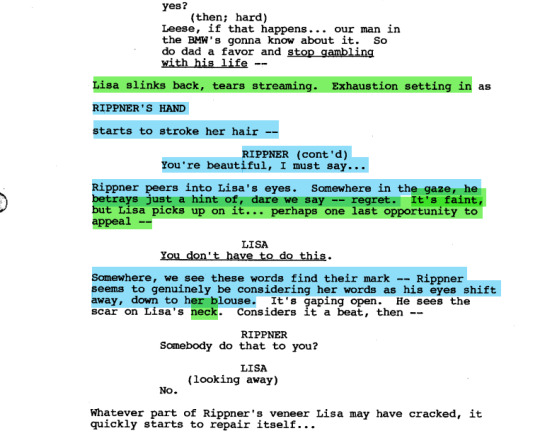
Okay, now really important stuff starts kicking in. Rippner practically spills out the fact that he is ATTRACTED to Lisa right at her face. The script makes it clear, that she now knows this and tries to use his attraction (and his regret) to persuade him to give up on Keefe assassination plan. Funny enough, she almost succeeds until he notices her scar. Personally, I think "You're beautiful..." line (and hair brushing) should have stayed in the final cut. Not only for the sake of the ship, but for the fact that without it Lisa's "You don't have to do this" sounds really naive.

Some of you may argue that this is all relevant for the movie, they just made it more subtle. Well, Movie-Lisa's best guess that Movie-Rippner might be attracted to her is the way Cillian looks at Rachel. On one hand many people point out that they do have chemistry and sexual tension, on the other the movie on its own leaves watchers to wonder whether the characters had any romantic feelings towards each other or not. And I probably stumbled upon a comment on YouTube, which interpreted the "You don't have to do this" line more as "You're so pretty, why do you have to be evil?" (or something along these lines)
Also I think that clarification would make Lisa a more nuanced character (by the fact that she tries to manipulate a villain into giving up on his villainy).
Also, as you may have noticed, the scar was meant to be on her neck, makes sence, given her backstory (He held a knife to my throat). I guess they moved it down just so Rippner wouldn't notice it earlier (though the script also mentions, that Lisa was meant to wear a sweater). I, personally, on the back of my horny mind, think he wasn't looking for scar when he gazed on her breast ( ͡° ͜ʖ ͡°).
A little note: Script-Lisa looks away saying "No" while Rachel looks straight into his eyes, but starts trembling instead.
By the way, Rippner wasn't meant to slam and choke her just yet.

I guess he just let her out to wipe out the messege. Here Lisa gives up on conving him.

Only after he finished wiping he starts to choke her. Also, pay CLOSE ATTENTION on what Rippner's lips do here ( ͡° ͜ʖ ͡°). Yep, he almost kisses her.
I guess the changes movie made here were for the sake of pacing.
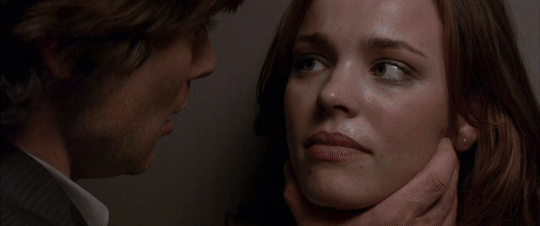

Another important difference: Rippner fixes both their outlooks to be more presentable. Lisa protests a bit.
I guess the movie crew decided they don't need to fix their look that much.
Also, I prefer the movie's "Peachy" instead of just "Good", though both lines are in the movie lol.
On the final note, I guess "Thanks for the quickie" line makes a bit more sence given we have Rippner's crawling lips there ( ͡° ͜ʖ ͡°).
So, these were the differences of the lavatory scene between the script and the movie. Hope you had as much shipping excitement as I did.
P.S: The link to the script. If you're a fan I strongly suggest to download it, it may easily become a lost media, like an earlier draft.
#red eye#red eye 2005#jackson x lisa#jackson rippner#lisa reisert#cillian murphy#rachel mcadams#wes craven#carl ellsworth
147 notes
·
View notes
Text
I was too young to see/ be aware of Red Eye when it came out, so have only just watched it for the first time today.
The way I held my breath during this movie 🤌🏽
It was jarringly American in some parts - and I don’t mean Cillian Murphy or Brian Cox’s accents, they were ✨flawless✨ to my non-American ears. It was the writing. Just some of it.
But otherwise no, holy shit, such a good film.
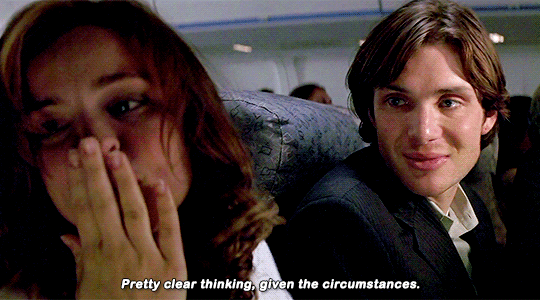
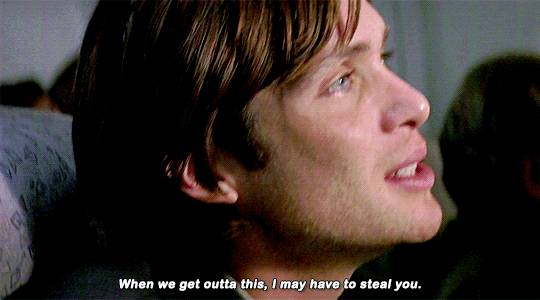
#red eye#red eye 2005#rachel mcadams#cillian murphy#brian cox#wes craven#carl ellsworth#early 2000s films were something else
39 notes
·
View notes
Text
Rachel McAdams and Cillian Murphy take the 'Red Eye' on Prime Video, Paramount+ and MGM+
With Red Eye (2005), horror pop-meister Wes Craven proves to be a good hand at crafting a simple, straightforward, surprisingly effective thriller with a minimum of gimmickry.
Rachel McAdams is Lisa Reisert, the smart, strong-willed hotel manager on her way to her grandmother’s funeral. Cillian Murphy is the freelance terrorist who extorts her into placing a high ranking government official…
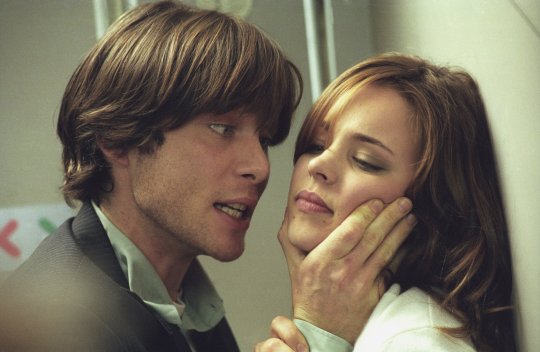
View On WordPress
#2005#Amazon Prime Video#Blu-ray#Brian Cox#Carl Ellsworth#Cillian Murphy#DVD#Jayma Mays#MGM+#Paramount+#Rachel McAdams#VOD#Wes Craven
3 notes
·
View notes
Text
Il giorno sbagliato
Tristemente deluso da 'Il Giorno Sbagliato'. Una trama piatta, personaggi poco sviluppati e una mancanza di empatia. Crowe e Pistorius non riescono a brillare in questo thriller stereotipato. Un vero spreco di talento e tempo. #Cinema #Recensione
Il giorno sbagliato – Un thriller inutile
Desolante. Questo è il primo aggettivo che emerge nella mente durante i titoli di coda de “Il giorno sbagliato”, un thriller diretto da Derrick Borte, il quale con questo film probabilmente ha posto una pietra tombale sulla sua carriera dietro la macchina da presa. Interpretato da Russell Crowe, che dovrebbe evitare di accettare ruoli simili, e che…

View On WordPress
0 notes
Text
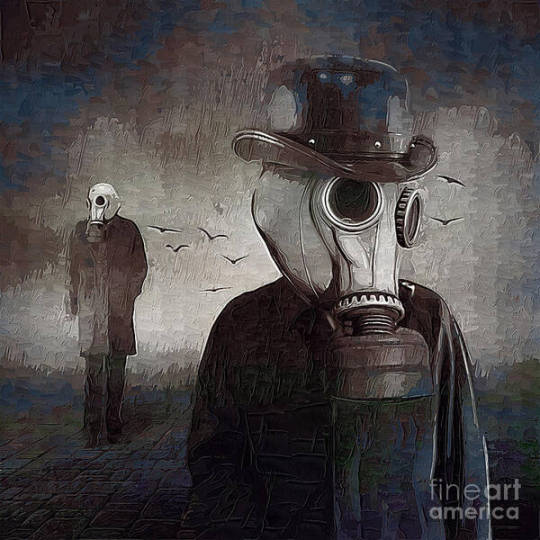
Evening Walk.
20 Years After the End of the Nuclear War. Digital Painting. HD Prints
#Digital Painting#Minimalism#Simple Art#Modern Art#Modern#Visual Art#Symbolism#Abstract Art#Abstract#HD#HQ#high resolution#Donald Judd#Ellsworth Kelly#Agnes Martin#Carl Andre#Frank Stella#Dan Flavin#Sol LeWitt#Robert Morris
2 notes
·
View notes
Text
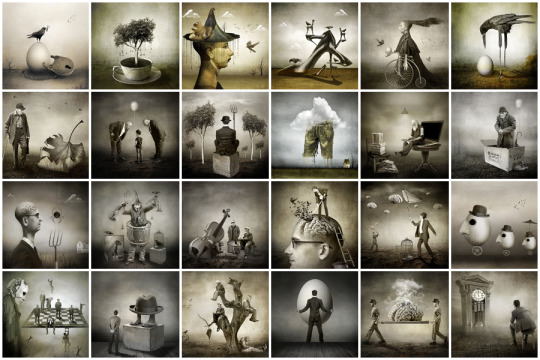
Simple Art - Posters & Canvas Prints
#art#artwork#digital art#Illustration#artist#artists on tumblr#fineartamerica#ink#drawing#sketch#painting#Ellsworth Kelly#Donald Judd#Sol LeWitt#Agnes Martin#Frank Stella#Carl Andre#Robert Morris
3 notes
·
View notes
Video
youtube
Art History with Travis Lee Clark “Lecture 07: Post Gestural Abstraction and Minimalism” (2021)
#travis lee clark#art history#contemporary art#sol lewitt#josef albers#ad reinhardt#minimalism#post gestural abstraction#clement greenberg#kenneth noland#ellsworth kelly#frank stella#anne truitt#donald judd#tony smith#carl andre#utah valley university#painting#sculpture#art#lecture#video#2021
8 notes
·
View notes
Photo

Red Eye will be released on 4K UHD + Blu-ray on March 21 via Paramount Pictures. The 2005 psychological thriller is the 39th entry in the Paramount Presents line of collector’s editions.
Wes Craven (A Nightmare on Elm Street, Scream) directs from a script by Carl Ellsworth (Disturbia, The Last House on the Left). Rachel McAdams, Cillian Murphy, Jayma Mays, and Brian Cox star.
Red Eye has been remastered in 4K with HDR and 5.1 DTS-HD Master Audio. Special features (included on the Blu-ray disc) are listed below, where you can also get a better look at the fold-out packaging.
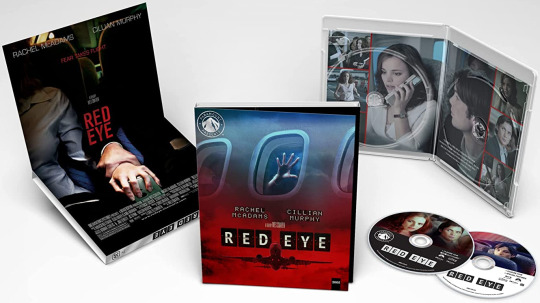
Special features:
Audio commentary by editor Patrick Lussier (new)
Audio commentary by director Wes Craven, producer Marianne Maddalena, and editor Patrick Lussier
Filmmaker Focus - Wes Craven and Red Eye (new)
Wes Craven: In His Own Words (new)
The Making of Red Eye
A New Kind of Thriller
Gag reel
Rachel McAdams is Lisa, a hotel manager catching a red-eye flight back to Miami. Her seemingly charming seat-mate Jackson (Cillian Murphy) turns out to be a terrorist agent, revealing his sinister intentions just after departure. If Lisa doesn’t cooperate with his evil plan, her father will be assassinated with one call into a sniper.
Pre-order Red Eye.
#red eye#wes craven#rachel mcadams#cillian murphy#horror#paramount presents#paramount#dvd#gift#jayma mays#brian cox#00s horror#2000s horror#00s movies#2000s movies
45 notes
·
View notes
Photo





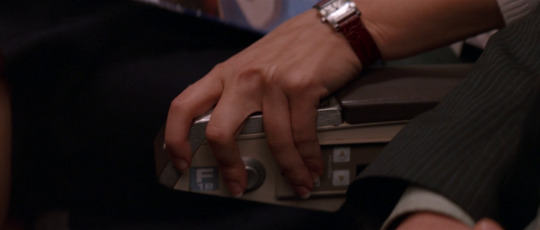
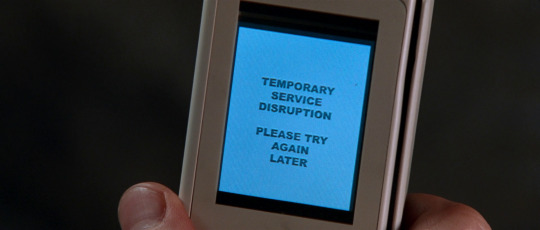



“Fact: Fearing to act is human.”
Red Eye, 2005.
Dir. Wes Craven | Writ. Carl Ellsworth | DOP Robert Yeoman
5 notes
·
View notes
Text
Gremlins/ Gremlins 3 (2023)
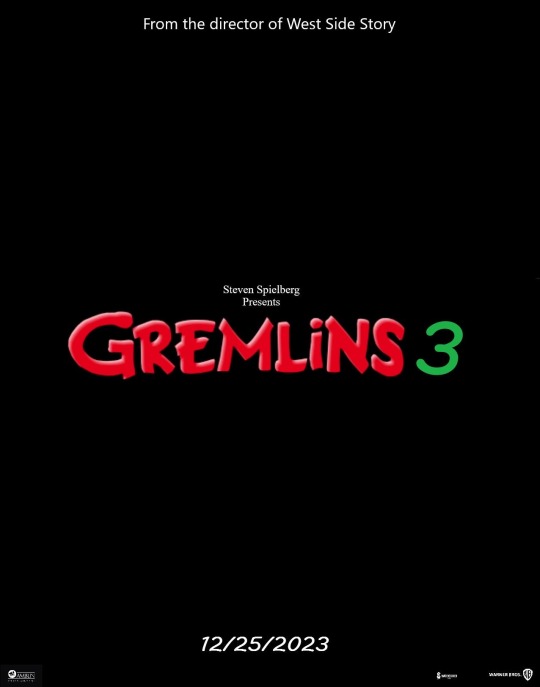

Film by Carl Ellsworth
Author: Chris Columbus
Producers: Seth Graham-Smith David Katzenberg, Chris Columbus (executive producer), Steven Spielberg (executive producer)
Country: USA
Genre: #horror #fantasy #comedia #fantastic
Production Studio: Warner Bros.
Amblin Entertainment
Legendary Entertainment
#horrorfilms_news #horror #fantasy #comedia #fantastic #gremlins3
#horrorfilms_news#horrormovies#horror#fantasy#comedy#fantastic#gremlins3#gremlins 1984#gremlins 1990#steven spielberg#warner bros#horror art
2 notes
·
View notes
Text
Unhinged (2020)
Please check out my latest review. Any feedback is greatly appreciated. Please subscribe!
#movie #movies #moviereview #moviereviews #moviereviewer #film #films #filmreview #filmreviews #moviecritic #filmcritic #subscribe #like #share #review #follow
Dir Derrick Borte
Written by Carl Ellsworth
Russell Crowe, Caren Pistorius, Gabriel Bateman, Jimmi Simpson, Austin P McKenzie.
The day after he has murdered his ex wife and her new partner, a man (Crowe) has an altercation with Rachel (Pistorius) on the road. She herself is having a bad day – and soon he is taking his anger out on her – and begins stalking her and those around her.
There are…
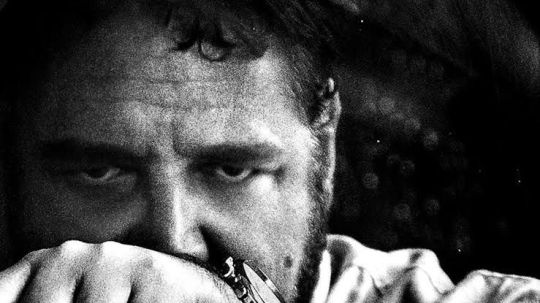
View On WordPress
#movie#movies#moviereview#moviereviews#moviereviewer#film#films#filmreview#filmreviews#moviecritic#filmcritic#subscribe#like#share#review#follow#russell crowe
0 notes
Text

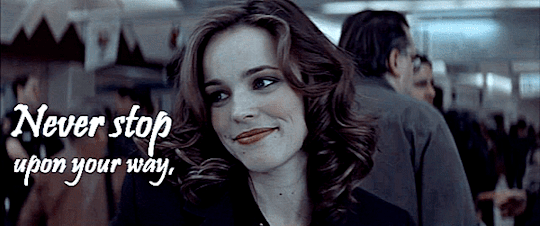

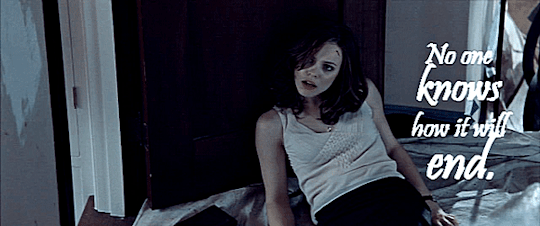



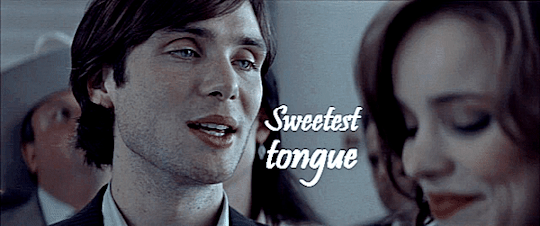

Red Eye + The Moral of Little Red Riding Hood by Charles Perrault
#red eye#red eye 2005#little red riding hood#the company of wolves#lisa reisert#jackson rippner#jackson x lisa#cillian murphy#rachel mcadams#wes craven#carl ellsworth#charles perrault#coloring: ashes and wine by oceanbreeze/coloursoftheocean#these lines open my fanmix for a reason UwU#too bad i have no idea who's the translator
118 notes
·
View notes
Text
Visual intelligence is very important. As the production of images changes and becomes faster with the computer and the internet, there's still a value to slowing perception down and studying things in detail. Learning about art is a perfect context for that kind of heightened seeing. This isn't about nostalgia for older ways of seeing, nor about pitting the accelerated looking of the computer against slow looking, but about promoting the value of slow looking.
You can promote slow looking through a close analysis, literally spending too much time looking at one thing. In art there are all kinds of techniques for doing that, but it really comes down to paying close attention and giving a close reading to whatever it is you're looking at. Hopefully the experience you get from paying close attention—in, a museum, for example—will key you to the fact that looking can be a pleasurable activity in any context.
Talking plays an important role in this kind of looking. I don't like art therapy, but I do think that in talking about art there is an element of psychoanalysis. When you tell someone what you're seeing, you learn more than you would if you hadn't put those thoughts into language. So it helps to talk to someone about art—and to listen.
To sharpen your visual sense it's important to look at painting and photography, but one of the best ways is to watch a lot of films—and to watch a lot of different kinds of films—because they give you twenty-four images per second.
LOOKING AT ART
I don't remember a time when I didn't look at art. It's always been a part of my life. I got seriously involved with art after I was kicked out of my art class in junior high school. I'd produced a drawing that my teacher found offensive, and I was put in a detention class for smart kids who were considered delinquent or something. We could choose two topics to study during that time, and we chose music and art. A great teacher, whose name escapes me right now, took us to the Ford Amphitheater to listen to free jazz and took us to the Pasadena Museum, where I was introduced to the work of Carl Andre, Marcel Duchamp, Joseph Cornell, Ellsworth Kelly, and Claes Oldenburg, among others. So it was an act of defiance—or maybe just an unconventional idea about drawing—that put me in contact with a bigger art world.
FORMATIVE EDUCATIONAL EXPERIENCE
CalArts, where I went to art school, was very open. Students' practices were not defined by a single medium. We were allowed and encouraged to do whatever we wanted. About five weeks into my first year I told one of my teachers that I had yet to receive an assignment. He said that there would be no assignments, because when we got out of school we wouldn't be fulfilling assignments. We would be working for ourselves, so why not start to work for ourselves now? They considered us artists, not students, and I carried that idea with me when I started teaching in the early 1980s. And I still do today. Another CalArts idea came from our teacher Douglas Huebler. Whenever we presented him with an idea for anything—an artwork or an artists' program or a film series—his answer was always, “Why not?” (He'd often follow it by saying, “It might not be good, but why not?”) CalArts really had a “why not?” attitude.
Sometimes people wait for the good ideas, but good ideas aren't the only things that produce good art. Sometimes, just picking up a bad idea and seeing how it works can produce something of value. So if you're sitting around waiting for inspiration or a foolproof idea, you're losing a lot of time.
So many young artists I meet don't seem to have understood that they're going to spend their whole lives as artists. They're in a hurry because they feel that if they're not a success right out of the gate they're going to be a lifelong failure. I encourage you to think in a much longer arc, to take it easy and do it for the long haul—not to have a preconceived idea of what success is in relation to a durational framework. Some artists are successful early on, others later.
Sometimes students also have misconceptions about what success is, mistaking the social aspects associated with success for actually making a successful artwork. To have a gallery, to have a big studio, and to make money isn't necessarily to make good art. Don't confuse those two things. I encourage you to think more historically and consider what your contribution to art could be, not about what your art practice can bring you in terms of material things.
ISSUE OF MEDIUM
Picking one primary medium and working strictly within it is unnecessary. It's not that it isn't an option, but it's one option among many. Especially today, artists are working in so many different media and disciplines, there's no reason to limit yourself to one. However, once you've chosen to work in a specific medium, it's important to know the history of that medium, its materiality, and how it functions technically. And as a late modernist artist I would say that it's very important to reflect upon your materials and the history of those materials.
I work primarily in photography. When I started, I really only intended to make a couple of works with it. I was interested in photography but not in being a photographer, and I certainly didn't think I was going to spend 35 years making primarily photographic works. Having said that, my idea of photography isn't confined to the idea of the camera and the print. I think of photography as an institution in which the print or the visual artifact is only one element in a network of other ways of signifying things.
So I consider the presentational devices—the framing, the mounts, the titles, the architectural situation, and the history of the institution presenting the show, the advertising, the posters, the catalogue, the essays in a catalogue—as all being an extension of the photographic institution. So then you have architecture, you have offset printing—the production of different kinds of language—which I see as being coextensive with the photographic surface.
I don't like to stand behind the camera or in front of the camera; I like to stand beside the camera. I figured out pretty early on—or I came up with the idea—that the camera is actually not the only agent involved in the production of meaning. There are also chemical designers, optical designers, and industrial designers. There are economic and social issues. So I try to move around the photographic program and occupy different positions at different times. Even though I didn't get assignments in art school, I do treat myself like a commercial photographer: I give myself assignments. I become a product photographer, or I become a photojournalist, and I pick a subject as though it were a journalistic assignment.
IMPORTANCE OF COLLABORATION
When it comes to dealing with galleries, my advice is not to hustle curators and dealers. Hang back and talk about other things. This isn't your only chance to show these people that you're interesting or to pull your slides out of your pocket. Instead, try to communicate the idea of collaboration. Often, young artists view curators, galleries, editors, publishers, etc., as a kind of service industry for them. But in the production of a show the curator and the essayist and the editor are actually your collaborative colleagues. You can't do everything. Ultimately, it's still an art-centered model, but the people you're working with are helping you achieve something that you can't necessarily do alone.
I've also been lucky enough to collaborate with some interesting artists. Two artists working together, or an artist and a writer—when it works, it produces a third element in the constellation, almost like a third person or a third subjectivity. In my best collaborations I think I emerge as another kind of artist. This isn't the place to name all the artists with whom I've worked, but my collaborations with people such as Albert Oehlen, Jeroen de Rijke, and Willem de Rooij, Mathias Poledna, and Martin Kippenberger have been really formative for me. For those reasons I strongly encourage young artists to collaborate.
WHAT AN ARTIST SHOULD DO EVERY DAY
Brush your teeth. And whatever you do, don't avoid the dentist for 35 years.
PAYING ATTENTION TO OTHERS
Pay attention to what other artists are doing. It gets harder and harder as the amount of art being produced keeps growing, but it's super important to know what your colleagues are up to. To be able to think about the present historically, you have to look at as much as you can right now. There's a more social aspect to it as well, which is that, if you expect people to pay attention to your work, you need to pay attention to theirs. If you don't care about your colleagues, they're going to be equally ungenerous to you. As artists become older and more successful, it's a very natural thing for them to withdraw and see fewer people and to look at less art. But artists such as John Baldessari and Ed Ruscha continue to go to galleries every month, getting to know younger artists and constantly looking at other people's work.
Young artists, especially, should be involved with each other. It's important to work together and try for things that might not at first seem achievable. You'll be surprised by what you can accomplish. And once you've found your community, be cool with those people, because you're going to know some of them for the rest of your life—which is a good thing and a bad thing. I was very fortunate in that regard. My colleagues at art school were Larry Johnson, Stephen Prina, Mike Kelley, John Miller, and a whole bunch of other really great people, who are still my friends and colleagues today.
ART HISTORY AND THEORY
It's important to study art history and art theory, but a distinction has to be made between making art and studying art history or theory. The practices of artists I find most interesting are those who think through their art or think through their materials and produce something like a theoretical model through their immersion in those materials and ideas, as opposed to taking ideas developed in philosophy or theory and then illustrating or applying them to the production of art. It's important to absorb as much information as possible but then to think through your materials. That doesn't mean just to think in terms of technique or to think visually but to really try to figure out the dimensions of your materials. Making a painting, for example, is different from writing. Language is a very different medium from paint.
READING
In my personal reading I find it's important to go beyond the realms of art history and art theory. I don't have a lot of time to read, so when I do read it's normally for information that I want to put to use in a project. Having said that, I've just had a long discussion with somebody about Thomas Bernhard's The Loser, which is a really fantastic book about a failed pianist whose entire life unfolds in the shadow of Glenn Gould's success. I think a work of fiction based on the moment one man realized that he was never going to be as good as Glenn Gould is a great book to give to aspiring artists.
MORE PRACTICAL ADVICE FOR YOUNG ARTISTS
1. No Plexiglas
2. No electricity
3. No humor
I don't like to throw rules at people, but if you follow those guidelines you'll be more likely to produce good art. Some of it's just practical. Plexiglas doesn't age well, so if you put it over something you've made, it's going to go milky and will get fine scratches when it's cleaned. Also, plastic is less optically precise than glass, so use glass in framing.
Electricity—again, it's just practical advice—is something that a lot can go wrong with. If you have a sound component in your work, for example, the minute you leave the installation the person at the front desk will turn down the sound, which means the sound level will never be where you want it. Twice, I took an hour-long train ride to see a friend's film installation, and twice the projector wasn't functioning—and these visits were two months apart.
The last rule—no humor—is so obvious I don't think I need to address it. Also—and this makes four rules—you shouldn't make anything you can't carry through the door yourself. This will ensure that everything is human scale and has a relationship to the body.
ASSIGNED READING, VIEWING, AND LISTENING
Reading:
– Betti, Laura, ed. Pier Paolo Pasolini: A Future Life. Bologna, Italy: Associazione Fondo Pier Paolo Pasolini, 1989.
– Buchloh, Benjamin. Neo-Avantgarde and Culture Industry: Essays on European and American Art from 1955 to 1975. Cambridge, MA: The MIT Press, 2000.
– Anything by T. J. Clark
– Anything by Thomas Crow
– Kelsey, John. Rich Text: Selected Writing for Art. Berlin: Sternberg Press, 2011.
– Kruger, Barbara. Remote Control: Power, Cultures, and the World of Appearances. Cambridge, MA: The MIT Press, 1994.
Kruger turns her eye to many things not considered art and deals with them as complex cultural objects, addressing them on the same level as she would an artwork. Her critical voice opened lots of doors for artists. And she's a great writer. Her language is just fantastic.
– Miller, John. When Down Is Up: Selected Writings. Frankfurt-am-Main: Revolver Verlag, 2001.
I guess it's obvious that a lot of what I read is artist's writings. Young artists should be exposed to as many different ways of being an artist as possible. Every artist I've mentioned uses language in a very different way. Realizing that you can adopt many voices is another thing I try to promote in my teaching.
– Robinson, Julia, ed. John Cage. Cambridge, MA: The MIT Press, 2011.
– Stemmrich, Gregor and Gerti Fietzek, eds. Having Been Said: Writings and Interviews of Lawrence Weiner 1968–2003. Berlin: Hatje Cantz, 2004.
There are two artists I turn to when I need to refocus and think about what I'm doing. One is Marcel Broodthaers, and the other is Lawrence Weiner. This book is an invaluable studio tool. Weiner's writing is very open and general, but it allows me to focus my thoughts.
Viewing:
– Bresson, Robert, dir. Au Hasard Balthazar. Cinema Ventures, 1966. Film.
– Godard, Jean-Luc, dir. 2 ou 3 Choses que Je Sais d'Elle (2 or 3 Things I Know About Her). The Criterion Collection, 1967. Film.
– Any Buster Keaton film
– Marker, Chris, dir. Sans Soleil. Argos Films, 1983. Film.
Listening:
– The entire recorded works of the Melvins
The Melvins are one of the most intelligent rock bands of the last 30 years.
– Anything by Sun Ra
1 note
·
View note
Text
Aeropuertos, feminismo y asesinato
Esa semana había concluido una serie de lecturas para un artículo de la universidad, y creo que las discusiones de mis profesores sobre Judith Butler comenzaron a entrar en mi organismo. Durante una de esas noches, vi nuevamente el thriller americano Red Eye, 2005, protagonizado por Rachel McAdams y Cillian Murphy bajo dirección de Wes Craven, famoso por A Nightmare on Elm Street (1984). La obra cinematográfica fue escrita por Carl Ellsworth - quien participó como guionista en la serie Xena: Warrior Princess en el 2000 - y Dan Foos. Todo comenzó a cobrar un sentido diferente de la visión ingenua que tenía cuando vi la película por primera vez en la televisión cuando era adolescente.
En los primeros minutos de la película, vemos que Lisa Reisert (Rachel McAdams) indica a Cynthia (Jayma Mays) por llamada telefónica, sobre cómo manejar a un par de huéspedes difíciles del hotel donde ambas trabajan, y la conversación entre los personajes deja entrever que los clientes mantienen una posición de superioridad, siendo exigentes y responsabilizando a la joven recepcionista sobre una situación que escapó de las manos de todos. La queja era sobre un error en el sistema, y Lisa, quien ocupa un cargo de prestigio, conoce todas las estrategias para resolverlo, ella es la voz de autoridad que los huéspedes del hotel respetan. Hay un abismo de clase entre Cynthia y Lisa que se hace perceptible durante la conversación telefónica.

Minutos después, Lisa está en el aeropuerto, en la fila para entrar al vuelo, y se presenta una situación similar cuando la empleada encargada de la fila es cuestionada sobre políticas de la empresa, siendo que ella no ocupa una posición de toma de decisiones. El hombre que discute sobre la condición de la fila responde un comentario de Lisa de forma hostil, sin escuchar lo que ella desea expresar para apaciguar la situación, entonces Jackson Rippner (Cillian Murphy) concluye la discusión, tomando al cliente furioso del brazo y estableciendo contacto visual. El cliente enojado se aleja reclamando, sabiendo que su discusión fue infructuosa, pero haciendo ver que se mantiene descontento. Es un mundo de hombres, donde se espera que ellos tengan el dominio sobre los otros, que su voluntad sea cumplida y a su vez, Jackson entra en la escena como el caballero salvador a la defensa de una dama en apuros.
Lisa y Jackson se embarcan en un vuelo a Miami que dentro del guion central involucra extorsión, secuestro y acoso, revelando que el personaje inofensivo de Jackson en realidad forma parte de una organización criminal que necesita convencerla de cambiar la habitación de un miembro del gobierno estadounidense en el hotel donde Lisa trabaja. Básicamente, este sería el resumen de la película, pero he decidido enfocarme más en los pequeños vestigios que revelan los mecanismos del poder bajo una lectura - poco académica - de Butler. Consideren este párrafo como un paréntesis y continúen leyendo.
Una vez sentados, uno al lado del otro, Jackson gana su confianza, ayudándola emocionalmente durante las turbulencias del despegue y comienza a hacer una serie de preguntas sobre la vida íntima de Lisa, empezando a crear curiosidad en ella. Así, Lisa decide saber sobre él, y se siente incómoda cuando él revela que no es una persona simple. Mientras esa situación está desarrollándose, las azafatas critican sus condiciones laborales haciendo un chiste sobre la máquina de café casi inservible. Una de ellas se acerca a atender el llamado del asiento de Lisa, y al verla llorar, se conforma con la respuesta de Jackson y asiste al pedido de servilletas y agua.

Durante esa escena en el avión, el diálogo revela cuestiones de género que se manifiestan con mayor fuerza en la siguiente línea de Jackson: "Lisa, whatever female-driven, emotion-based dilemma you're dealing with right now, you have my sympathy / Lisa, no sé a qué dilema femenino basado en emociones te estés enfrentando ahora, pero cuentas con mi simpatía" dice con cinismo mientras ella llora, y añade: "But for the sake of time and sanity, let's break this down into a little male-driven, fact-based logic / Pero por cuestiones de tiempo y cordura, analicemos esto con una lógica masculina, basada en hechos". Para el villano está todo muy claro, las mujeres tienen una configuración biológica que las hace irracionales, seres emocionales que están afectadas por una marea de hormonas constantemente, y que solo los hombres son capaces de controlar sus emociones, ordenar sus ideas para construir una realidad lógica. A medida que transcurre el vuelo, vemos cómo Jackson va perdiendo control de la situación y su "lógica masculina" comienza a ser desafiada por los intentos de Lisa en escapar de su sometimiento.
Llamada falsa, intentos de conmover al villano, mensaje de alerta en el espejo del baño. Lisa demuestra ser una protagonista determinada a sobrevivir, con estrategias interesantes y buen dominio de sus emociones. Es interesante que mientras ella hace la fila para entrar al baño, Jackson la vigila de pie desde su asiento y a nadie parece importarle, nuestra sociedad está acostumbrada a ver hombres que sustituyen la figura paterna para cuidar de mujeres adultas, hombres que acompañan, hombres que protegen, hombres que celan de otros hombres. Solamente una niña rubia con el cabello trenzado se da cuenta de que ocurre una situación inusual, pero no conversa con Lisa, apenas confronta a Jackson con la mirada. Cuando el villano entra forzosamente al baño junto a su víctima, la niña lo denuncia, pero la azafata cree que se trata de una aventura sexual y no interviene. Cuando ambos salen, una de las azafatas advierte que esas conductas no son permitidas y la respuesta le causa intriga.
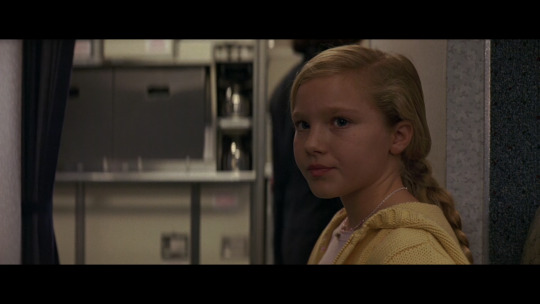
Una vez que sus planes de evasión fracasan, Lisa parece rendirse y hace la llamada telefónica que Jackson tanto anhela, a Cynthia le parece una decisión extraña, pero confirma la petición por tratarse de una autoridad en esa empresa. Lisa se arrepiente aún más de lo que está por ocurrir al enterarse de que toda la familia del oficial de gobierno está en riesgo.
El avión finaliza el aterrizaje y preparándose para abrir sus puertas, Lisa confiesa que una marca en su pecho es la evidencia de haber sido una rehén en el pasado, un pasado de violencia que se contradice a la tranquilidad de la vida burguesa que otros piensan, y antes de apuñalar la garganta de Jackson con un bolígrafo, le aseguró que ella había prometido que aquello nunca iba a volver a pasar. Nuestra protagonista huye entre las personas que intentan descargar equipaje de mano, y cuando Jackson comienza a correr detrás de ella, la niña rubia atraviesa una maleta en el pasillo que lo hace caer. Hay un breve intercambio de miradas en el que la niña parece preocupada, quizá por ser culpada de la artimaña o por el futuro de Lisa, quien corre por los pasillos del aeropuerto de Miami, escondiéndose de los agentes de seguridad y del villano.

Se desarrolla una escena increíble de huida, sin policías de tránsito ni semáforos rojos, Lisa conduce por la autopista en dirección a la casa de sus padres, mientras llama a Cynthia para revelarle sobre la amenaza. En el hotel, la recepcionista acciona la alarma de incendios y sube hasta la habitación de la familia que sufrirá el atentado para ayudarlos a evacuar las instalaciones. Los cómplices de Jackson abandonan la escena después de estallar la suite, creyendo que habían logrado su objetivo final.
Sin mayores spoilers - aunque ya hubo suficientes -. Lisa es sorprendida por Jackson en la casa de su padre, después de haber atropellado al copartícipe que lo asesinaría si el plan fallaba. Ocurre entonces una persecución con intento de asesinato, que lleva a una fracción interesante, donde Lisa le pregunta al villano detrás de una puerta: "Where's your male-driven, fact-based logic now, Jack? I don't think that's what got you here / ¿Dónde está tu lógica masculina, basada en hechos, Jack? Creo que no es lo que te trajo hasta aquí". Jackson está cansado, física y mentalmente herido, sus planes fueron frustrados por una mujer que él había subestimado durante todo el vuelo, y ahora que estaba en la ciudad, él podría haber planeado fríamente el asesinato de su objetivo, sin embargo, él escoge seguir sus impulsos para satisfacer su ego y entra en un estado puramente emocional, desea vengarse. No haré spoiler sobre la muerte de Jack, vean el filme y verifiquen con sus propios ojos si era el destino que merecía.

En la escena final de la película, Lisa corre por los pasillos del hotel lleno de agentes policiales y bomberos al encuentro de Cynthia, quien le asegura que hizo un buen trabajo a pesar de la tentativa de homicidio y la explosión de una de las habitaciones. El sobreviviente se acerca para agradecerles, y después, llegan los huéspedes molestos a quejarse y pedir el despido de Cynthia. Es curioso que Lisa se posiciona a favor de ella y luego interactúan amistosamente, reforzando un vínculo mayor que la distancia entre clases sociales y posiciones laborales. Este vínculo es importante en la visión feminista de Butler: las mujeres van más allá de los cuerpos que las representan, ellas son mujeres por ser construidas discursivamente de esta manera, y ello les da la oportunidad de reconocer a las mujeres en otros cuerpos y otros contextos. He allí la relevancia del encuentro entre dos mujeres que vienen de pasados diferentes, y que a pesar de ocupar posiciones heterogéneas en la sociedad, encuentran la posibilidad de crear lazos de empatía, respeto mutuo y unión.
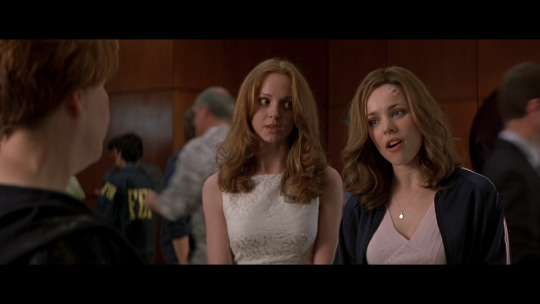
Por supuesto, esta película no es una rara avis donde se evidencian personas trans y no binarias de forma natural, y mucho menos hay diversidad racial en sus escenas. Todo lo contrario, es un film que corresponde muy bien a su tiempo - Hollywood durante final de la década de 1990 e inicio de los 2000 - cuando la construcción de elencos continuaba siendo mayoritariamente blanco, compulsoriamente heterosexual y conforme al binarismo de género. Pero es en los pequeños detalles que fueron citados, donde reposa una crítica del discurso que sería cultivada paulatinamente hasta nuestros días.
Sí, los guionistas y el director son posiblemente hombres - no pude confirmar el género de Dan Foos - ni la orientación sexual de ellos, sin embargo, eso no significa que la discusión de género no pueda plantearse desde la masculinidad. Otra posibilidad que presenta esta película, es que la presencia de mujeres que trabajan, mujeres que dirigen, mujeres que viajan solas es algo con lo que la sociedad debe lidar sin condescendencia ni hipocresía, la obra da minutos de cámara a azafatas, recepcionistas, amigas reunidas en un café, provocando reflexiones sobre el cambio del papel del hombre en una sociedad más justa y cómo la noción de ciudadanía formó mujeres que buscan los mismos derechos y deberes. Sobre sus premiaciones, pues la película no ganó nada significativo. Estuvo nominada a los Golden en la categoría "Mejor Thriller", pero Open Water (2003) de Chris Kentis se llevó el premio.
1 note
·
View note
Photo
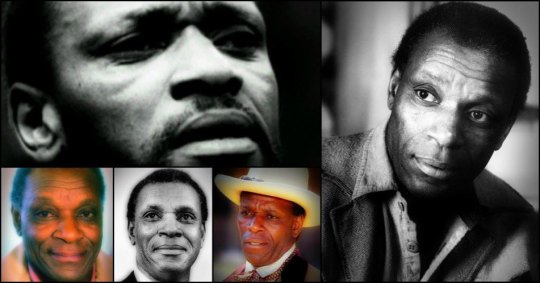
Moses Gunn (October 2, 1929 – December 16, 1993) was an actor on stage and on screen. An Obie Award-winning stage player, he co-founded the Negro Ensemble Company in the 1960s. His 1962 Off-Broadway debut was in Jean Genet's The Blacks, and his Broadway debut was in A Hand is on the Gate, an evening of African-American poetry. He was nominated for a Tony Award as Best Actor for The Poison Tree and played Othello on Broadway. He graduated from Tennessee State University where he became a member of Omega Psi Phi Fraternity, after serving in the Army, then went to graduate school at Kansas University, gaining a MA. He taught at Grambling College before attempting an acting career in New York City. He may be remembered in the film for his portrayal of mobster Ellsworth Raymond "Bumpy" Jonas in the first two Shaft movies, Booker T. Washington in the movie Ragtime, a performance which won him an NAACP Image Award, and as Cairon, the Childlike Empress' imperial physician, in the film The Never Ending Story. He was nominated for an Emmy Award for his role in the television mini-series Roots. He co-starred with Avery Brooks on the television series A Man Called Hawk. He appeared in six episodes as atheist shop owner Carl Dixon on Good Times, as boxer-turned-farmer Joe Kagan on Little House on the Prairie, and as "Moses Gage" in Father Murphy. He appeared in two episodes of The Cosby Show as two different characters. His final acting role was as murder suspect Risley Tucker in "Three Men and Adena", an episode of Homicide: Life on the Street. #africanhistory365 #africanexcellence #omegapsiphi https://www.instagram.com/p/CjNgf8krQl4/?igshid=NGJjMDIxMWI=
0 notes
Text

Red Eye (2005)
In the wake of her grandmother's funeral, hotel manager Lisa Reisert (Rachel McAdams) is waiting to fly back home when she meets charming Jackson Rippner (Cillian Murphy) at check-in. She thinks it luck that they're seated together on the plane, but soon learns otherwise. Jackson hopes to assassinate the head of Homeland Security, but to do so, he needs Lisa to reassign the official's room number at her hotel. As insurance, Jackson has kidnapped Lisa's father (Brian Cox).
5 notes
·
View notes